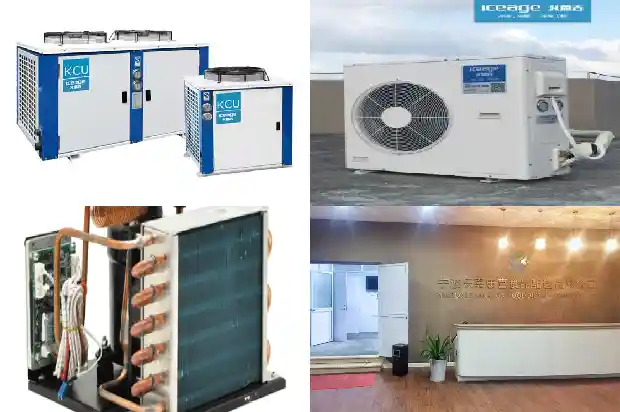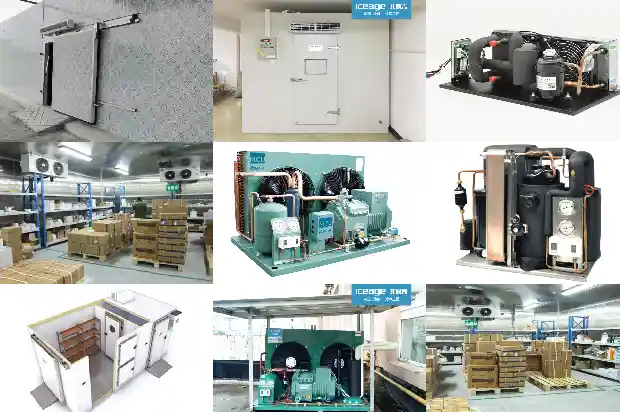Types and Temperature Requirements of Seed Cold Storages
2024-09-20
There are certain differences between building a seed cold storage and an ordinary cold storage.

When building a seed cold storage, 100mm double-sided color steel polyurethane cold storage insulation board is used, which is insulation, moisture-proof, hygienic, clean and corrosion-resistant.
The seed cold storage is equipped with an independent dehumidification device, which is not the same as the conventional quick-freezing cold storage and the refrigeration of frozen meat and aquatic products, and is fully automatic control.
- Long-term seed cold storage is used for long-term storage of seeds. The temperature in the cold storage is controlled within the range of -10℃ to -20℃, and the relative humidity is not more than 60%. The international reference standard recommended for the long-term preservation of normal seeds is -18℃ or lower temperature conditions, and the seed moisture content is 5±1% (based on wet weight). It is sealed in airtight containers such as sealed metal boxes, aluminum foil bags, plastic composite film bags, glass bottles, etc. The expected lifespan of seeds is 30 to 50 years or longer.
- The medium-term storage seed cold storage is used for storing mobile seeds. The temperature of the seed storage is controlled within the range of 0℃ to 10℃, and the relative humidity is not more than 60%. The seed container is the same as that of the long-term storage. The seed moisture content is 6% to 9%. The expected lifespan of seeds is 10 to 30 years.
- The short-term seed cold storage is used to store productive seed storage. The temperature in the cold storage is controlled at 15℃ to 20℃. The relative humidity is 50% to 60%. Seed containers range from paper bags, plastic bags, cloth bags, glass bottles, etc. The moisture content of seeds is below 12%. The expected lifespan of seeds is 2 to 5 years.
The composition of seed cold storage: refrigeration equipment for refrigeration, evaporator in the cold storage, insulated warehouse, and microcomputer temperature control system. The refrigeration system mainly includes various refrigeration compressor units. The refrigeration compressor is the heart of the cold storage and ensures the seed temperature in the warehouse. The microcomputer temperature control system is the brain of the cold storage. It controls the operation of the refrigeration system and the temperature in the cold storage.
The evaporator in the cold storage is used to provide cooling capacity to the cold storage. The evaporator is installed in the cold storage. The blower is used to blow the cooled air to all parts of the cold storage. Large cold storages often use air ducts to connect the evaporators to extend the air supply distance and make the temperature drop in the cold storage more uniform.
The insulated warehouse is a warehouse with certain heat insulation performance. It is a place for storing seeds. It maintains the indoor heat insulation performance and temperature stability. The better heat insulation structure of the insulated warehouse can keep the cooling capacity produced by the refrigeration equipment from leaking out as little as possible, that is, minimize the invasion of heat from outside the warehouse into the warehouse as much as possible. This is also the difference between a seed cold storage and an ordinary house.
Temperature of seed cold storage:
Seed storage provides a reliable material basis for agricultural production and improves the quality of seed sowing. The seed cold storage with moisture-proof and air-tight functions is put into use. Through regular and fixed-point observation, recording and analysis of the seed temperature and warehouse temperature and humidity of stored hybrid rice and corn seeds, it is shown that the average annual temperature of the warehouse is 11.2℃, and the average relative humidity is 63.8%. The results of regular and fixed-point tracking and detection of the moisture content and germination rate of stored seeds for two years show that the germination rate of hybrid rice seeds decreases by 2.5%, and the germination rate of hybrid corn seeds decreases by 4.0%. The moisture content of seeds remains basically unchanged, and the economic benefits of storing seeds.
It is recommended to consider the following aspects when building a seed cold storage:
First of all, determine the scale of seed cold storage construction.

Secondly, it is necessary to know the equipment composition required for seed cold storage construction. Insulated warehouse, refrigeration equipment, microcomputer temperature control system, and evaporator in the cold storage are its core parts.
Finally, pay special attention to the determination of the warehouse temperature when building the seed cold storage. After years of experiments by seed cold storage construction experts, the optimal cold storage temperature for some agricultural product seeds has been determined. For example, the average annual temperature of hybrid rice and corn seed storage is 11.2℃, and the average relative humidity is 63.8%.
The construction of seed cold storage is of great significance for the development of agriculture and people's livelihood. It provides a reliable material basis for agricultural production and improves the quality of seed sowing. After the moisture content of the stored seeds remains basically unchanged, the economic benefits of storing seeds are significant.
Related Articles
- Introduction to Basic Types of Cold Storage
- Cleaning Methods for Different Types of Condensers in Refrigeration Devices
- Introduction to Types of Condensers in Cold Storage
- What are the important significances of a warm environment for various types of food?
- 5 Common Types of Refrigeration Compressors
- Four types of flammable and explosive refrigerants
- The characteristics and uses of 26 types of air conditioning refrigerants
- What Misconceptions Should Be Avoided in Low - temperature Refrigeration System Repairs
- Why Does the Evaporation Temperature of the Refrigeration System Drop Too Low? And Why is the Condensing Pressure Too High?
- Introduction to the Advantages of Dual - temperature Cold Storage
- What are the characteristics of low-temperature cold storage?
- Requirements of Cold Storage Insulation for Maintaining Stable Temperature Inside
- Temperature Gradient Differences between Deep Foundation and Surface of Civil Cold Storage
- Temperature Requirements for Various Cold Storages
- Is the heating effect of air source heat pump air conditioner with enhanced vapor injection really good under low temperature conditions?
- 15 Reasons for Excessive Temperature Rise of Motors
- Influence of Condensing Temperature Variation on Vapor Compression Refrigeration System
- Introduction to the Relationship between Refrigerants and Cold Storage Temperatures
